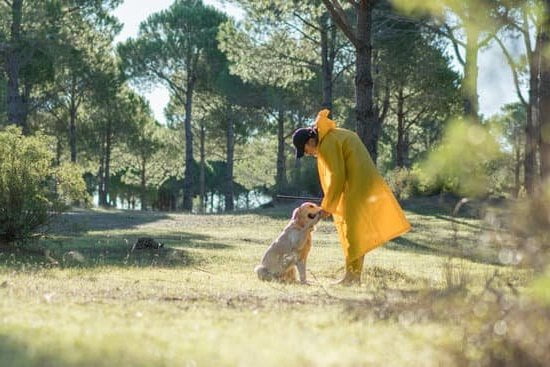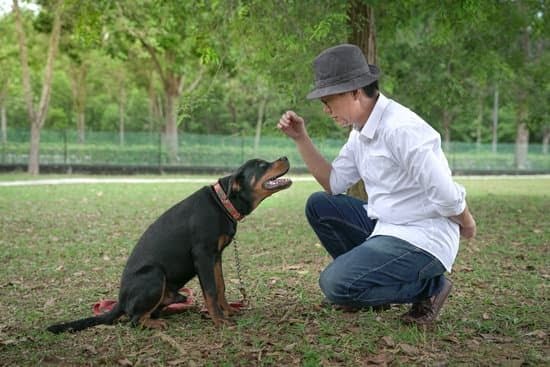Livestock guardian dogs play a crucial role in the protection and well-being of livestock on a farm or ranch. These dedicated canines are specifically bred and trained to keep watch over herds, flocks, and other animals, warding off potential threats such as predators and intruders. In this article, we will discuss the various aspects of training a livestock guardian dog to fulfill its important duties effectively.
When it comes to selecting the right breed for livestock guardian duties, there are several factors to consider, such as the type of livestock being protected and the specific needs of the farm or ranch. Building a strong bond with these dogs is essential for their effectiveness in guarding duties. This involves establishing trust and respect through socialization, positive reinforcement, and proper care.
Once a strong bond has been formed, basic obedience training is the next step in preparing a livestock guardian dog for its role. Teaching commands such as “sit,” “stay,” and “come” can greatly enhance their ability to work alongside farmers and other animals. It is also essential to understand their natural instincts and behaviors in order to effectively train them for advanced skills like boundary control and predator deterrence.
Selecting the Right Breed for Livestock Guardian Duties
When it comes to selecting the right breed for livestock guardian duties, it’s important to consider the specific needs and environment of your farm or ranch. Different breeds of livestock guardian dogs have been bred for centuries to excel in protecting and guarding different types of livestock. Here are a few factors to consider when choosing a breed for your specific needs:
- Size: Consider the size of your livestock and the predators in your area. Larger breeds such as the Great Pyrenees or Anatolian Shepherds are better suited for protecting larger animals like cattle, while smaller breeds such as the Akbash or Maremma may be more suitable for smaller livestock like goats or sheep.
- Temperament: Look for breeds that have a calm and patient nature, but are also confident and assertive when they need to be. Livestock guardian dogs need to be able to make independent decisions and react quickly to potential threats.
- Energy Level: Consider the energy level and exercise needs of the breed. Some livestock guardian dogs are more active and may require more space to roam, while others may be content with less exercise.
When selecting a breed for livestock guardian duties, it’s essential to do thorough research on the characteristics and temperaments of different breeds before making a decision. Take into account the specific needs of your farm or ranch, as well as the type of livestock you need protection for.
The key is to find a breed that fits well with your unique farming operation and one that will be reliable and effective in protecting your valuable animals from potential threats. It’s essential to choose a breed that not only meets your specific needs but also integrates well with your existing farm management practices.
Ultimately, selecting the right breed is crucial as it sets the foundation for successful training and integration into your farming operation. How do you train a livestock guardian dog will largely depend on finding the right fit between breed characteristics and farm requirements.
Building a Strong Bond With Your Livestock Guardian Dog
Establishing a strong bond with your livestock guardian dog is essential for their effectiveness in protecting the herd. One of the first steps in building a strong bond is to spend quality time with your dog, allowing them to become familiar with your presence and scent. Regular interaction, such as feeding, grooming, and playtime, can help create trust and loyalty between you and your dog.
Communicating effectively with your dog is also crucial in building a strong bond. Understand their body language and vocalizations, and respond to their needs accordingly. Consistency in your interactions and reactions will help your livestock guardian dog feel secure and understood, strengthening the bond between both of you.
It is important to establish yourself as the leader of the pack while still respecting your livestock guardian dog’s instincts and natural behaviors. Training methods based on positive reinforcement rather than dominance are effective in gaining your dog’s respect without compromising their guardian instincts. This approach fosters a relationship based on mutual respect, where your livestock guardian dog sees you as a trustworthy partner in safeguarding the livestock.
Meeting Physical and Emotional Needs
Caring for the physical and emotional well-being of your livestock guardian dog is integral to building a strong bond. Providing proper nutrition, regular exercise, and mental stimulation are vital for their overall health and happiness. Additionally, creating a comfortable living environment for your dog will ensure that they feel secure and content while carrying out their duties. Meeting these needs will enhance the connection between you and your livestock guardian dog, ultimately leading to a more effective working relationship.
Basic Obedience Training for Livestock Guardian Dogs
Livestock guardian dogs play a crucial role in protecting and safeguarding livestock on farms and ranches. To effectively carry out their duties, it is essential to provide them with basic obedience training. This involves teaching them fundamental commands and behaviors that will help in managing their interactions with both the livestock they protect and the humans who care for them.
Teaching Basic Commands
The first step in basic obedience training for livestock guardian dogs is to teach them essential commands such as sit, stay, come, and leave it. These commands are valuable in controlling the dog’s behavior around the livestock and ensuring that they respond promptly to instructions from their owners. By consistently practicing these commands, handlers can establish clear communication with their dogs and instill discipline.
Establishing Boundaries
Livestock guardian dogs need to understand boundaries to effectively protect the herd or flock under their care. Through obedience training, they can be taught to respect physical boundaries like fences or designated areas within the property. This is important in preventing the dogs from wandering off or getting too close to roads or other potentially dangerous areas.
Training a livestock guardian dog also involves introducing them to various real-life scenarios they may encounter while on duty. Exposure to different situations helps them develop confidence and adaptability, enabling them to carry out their responsibilities effectively.
As you consider how do you train a livestock guardian dog keep in mind that ongoing reinforcement of basic obedience training is crucial for maintaining a well-behaved and reliable working companion. Regular practice sessions, positive reinforcement techniques, and patience are key elements in successfully training a livestock guardian dog in basic obedience skills.
Socializing Your Livestock Guardian Dog
Livestock guardian dogs play a crucial role in protecting livestock from predators, making their socialization with the animals they will be guarding an essential part of their training. One key aspect of socializing a livestock guardian dog is introducing them to the specific type of livestock they will be working with.
Whether it’s sheep, goats, or cattle, allowing the dog to spend time around these animals from an early age helps build familiarity and trust between them. This can prevent any potential aggression from either the dog or the livestock as they become accustomed to each other’s presence.
In addition to getting your livestock guardian dog comfortable around your livestock, it’s also important to socialize them with people and other animals on the farm. This can help prevent any unexpected behavioral issues that may arise when they encounter strangers or unfamiliar creatures. Positive interactions with farm workers and family members, as well as exposure to other domesticated animals such as pets, can contribute to a well-rounded and well-adjusted livestock guardian dog.
An effective way to introduce a livestock guardian dog to new situations and surroundings is through controlled exposure. This means gradually exposing the dog to different environments, people, and animals while closely monitoring their behavior and reactions. Positive reinforcement techniques such as treats and praise can be used to reward desirable behaviors during these socialization experiences. Consistent, patient, and gentle training methods are key in ensuring that your livestock guardian dog becomes comfortable and confident in various social settings.
| Aspect | Description |
|---|---|
| Livestock Interaction | Introduce LGD to specific type of livestock they will be guarding. |
| People & Animal Interaction | Socialize LGD with farm workers, family members and other domesticated animals. |
| Controlled Exposure | Gradually expose LGD to different environments while using positive reinforcement techniques. |
Understanding Guardian Instincts and Behavior
Livestock guardian dogs are bred for a specific purpose: protecting livestock from predators. This means that they have strong instincts and behaviors that make them well-suited for this role. Understanding these instincts and behaviors is crucial in effectively training and working with a livestock guardian dog.
One of the key instincts of a livestock guardian dog is their territorial nature. These dogs see the livestock they are guarding as part of their pack and will fiercely protect them from any perceived threats. It’s important to recognize and work with this instinct when training your dog, as it can be both beneficial and challenging when managing their behavior around people, other animals, or unfamiliar situations.
Additionally, livestock guardian dogs have a natural independent streak. Unlike herding dogs that rely on close direction from their handler, guardian dogs are more autonomous in their decision-making. They are known for being able to assess potential threats and act accordingly without much input from their owner. This independence can make training a bit more challenging, but with the right techniques, it can also lead to an incredibly effective guardian.
Lastly, livestock guardian dogs have a strong protective instinct towards their flock or herd. This means that they may exhibit behaviors like barking, patrolling the perimeter, or even physically confronting predators to keep the livestock safe. Understanding and harnessing this protective behavior through training is essential in ensuring that the dog fulfills its duty effectively.
- Recognize and work with your dog’s territorial instincts
- Understand your dog’s independent streak and use it to your advantage
- Harness your dog’s protective instinct through proper training techniques
Livestock guardian dogs have unique instincts and behaviors that make them well-suited for protecting livestock. Understanding these traits is essential in effectively training these dogs to fulfill their role on the farm or ranch.
Learning how to train a livestock guardian dog involves recognizing and working with their territorial nature, understanding their independence, and harnessing their protective instinct through proper training techniques.
Advanced Training for Livestock Guardian Dogs
Once your livestock guardian dog has mastered basic obedience and socialization, it is time to move on to advanced training. This stage of training is crucial for ensuring that your dog can effectively protect your livestock and property from predators and other potential threats. Advanced training focuses on developing skills such as boundary control, predator deterrence, and livestock protection.
Boundary control is an essential skill for a livestock guardian dog as it helps establish the areas that they need to protect. This can be achieved through consistent reinforcement of the boundaries using verbal commands and physical barriers. It is also important to train your dog to understand the specific areas where your livestock roam and need protection.
Another crucial aspect of advanced training is predator deterrence. Livestock guardian dogs must be able to identify potential threats and take appropriate actions to deter them. This can involve barking, patrolling, or standing their ground in the presence of predators. Training exercises to simulate encounters with potential threats can help reinforce these behaviors in your dog.
Additionally, livestock protection is a key part of advanced training for guardian dogs. They need to learn how to identify and respond to any distress signals or signs of danger from the herd they are protecting. This may include riling up the herd, alerting the farmer or rancher, or physically intervening if necessary.
Training in these advanced skills requires patience, consistency, and dedication from the owner. Positive reinforcement techniques should be used throughout this process, and it is important to regularly assess your dog’s progress and make adjustments as needed. With proper training, a well-prepared and well-trained livestock guardian dog can be a valuable asset in protecting your farm or ranch.
Maintaining and Supporting Your Livestock Guardian Dog
In conclusion, training a livestock guardian dog is a crucial aspect of ensuring the safety and well-being of your farm or ranch. By understanding their role and selecting the right breed, you can set a strong foundation for training. Building a strong bond with your dog and providing basic obedience training are essential steps in the process. Additionally, socialization and understanding their instincts and behaviors are key components of successful livestock guardian dog training.
As your livestock guardian dog matures, advanced training becomes necessary to enhance their skills in boundary control, predator deterrence, and livestock protection. Advanced training techniques will further optimize their effectiveness in safeguarding your livestock. Moreover, maintaining the health, nutrition, and overall well-being of your livestock guardian dog is crucial for their long-term effectiveness on the farm or ranch.
In essence, how do you train a livestock guardian dog is not just about teaching commands; it’s about nurturing a relationship built on trust between you and your faithful protector. With patience, consistency, and dedication to their well-being, you can successfully train a reliable livestock guardian dog that will be an invaluable asset to your agricultural operation.
Frequently Asked Questions
Do Livestock Guardian Dogs Need Training?
Livestock guardian dogs do benefit from training, especially in terms of socialization and basic obedience. Training helps them understand their role in protecting the livestock and prevents any unwanted behavior.
How Do You Discipline a Livestock Guardian Dog?
Discipline for a livestock guardian dog should focus on positive reinforcement rather than punishment. Consistent training, clear communication, and rewarding good behavior are effective methods for guiding their behavior.
What Is the Easiest Livestock Guardian Dog to Train?
The easiest livestock guardian dog to train is often considered to be the Great Pyrenees. They are known for their intelligence, willingness to work, and natural instinct to protect livestock, making them more receptive to training efforts compared to other breeds.

Welcome to the blog! I am a professional dog trainer and have been working with dogs for many years. In this blog, I will be discussing various topics related to dog training, including tips, tricks, and advice. I hope you find this information helpful and informative. Thanks for reading!





